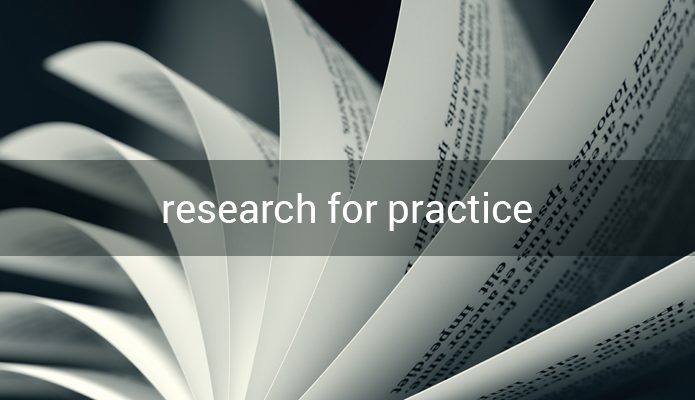Digital libraries provide organized, inclusive and open access to quality information sources. They are multifaceted…

The Tech Savvy Child E-reading: Children’s Experiences and Perceptions of E-Book Reading
Children are tech savvy. This statement should come as no surprise to, well, anyone. Their knowledge and skill are apparent in the way they use devices to consume media including watching videos, playing games, and reading e-books.
There is a growing body of work that focuses on this new tech literacy including studies on e-books, literacy and education, the production and sales of e-books and children’s e-book reading habits. Library research adds to this body of knowledge by examining digital libraries for children, the classification of e-books, user interface design, and the building of e-book collections for children. With over 70 billion applications available for download and many of those targeted at children this area of research is sure to grow. Remarkably many studies in these areas are adult-centric, especially those about young children.
What follows are some of the findings of an exploratory study conducted in order to ascertain children’s experiences and perceptions of e-book reading from the children themselves.
These findings are focused around three broad research questions: Are children perceptively tech savvy? How does their technical knowledge contribute to their e-reading experience? And does that affect their selection of reading medium?
“My first time I knew it.
I knew it before I even learned it.” (Hero, 8 years)
Data was collected through observation and interviews with data captured through field notes and audio-recording. Twenty participants, ages 2-12, were asked to read or explore e-book applications and then answer ten questions about their e-reading experiences and their perception of e-books.
Techy Kids
It was an inclusion criterion that the participants were exposed to e-books before taking part in the study (for a minimum of three months). All of the children had access to a tablet at home, usually a shared family tablet, either Android or iOS. Observations showed that all the participants of the study demonstrated a solid working knowledge of the tablet. For example:
Observation Note: Mom asks Olivia (2 years) to turn the volume down and she does.
Lynne: Oh, you know how to turn the volume down. That’s really good Olivia.
In addition to their foundational knowledge about the conventions of tablets, the children were quick to learn new skills and then use those skills when e-reading. Learning the technology was part of the e-reading experiences such as shared e-reading which occurred between both parents and children as children under the age of 5 were observed and interviewed with their parents present, as well as siblings as some children were observed e-reading with their brothers/sisters. Observations revealed that shared experiences could be learning experiences and contributed to the participants’ technical knowledge and skill with e-book applications.
For example, the following is an interaction between Stella (3 years old) and her mother:
Stella: Where is the airplane?
Mom: There it is.
Stella: [Touching cloud again. Plane appears. Sounding very pleased with herself] I got it!
Observation Note: Stella touches word after word and the book app reads the words aloud. Stella has learned to do this very quickly (in a minute or two in front of me).
Theory Note: Stella is remarkably independent using this book app. She knows the basic functions like how to turn a page, tapping images and that the words turn red in colour as they are read.
Similarly, sibling groups such as Lianne (6 years old) and her sister Silvia (4 years old ) instructed each other on what to do by showing with their own fingers or pointing to the correct application when it came time to choose the next e-book to read.
Tech Knowledge and E-reading
The technical knowledge and skill of the participants contributed to their e-reading experience by allowing them to navigate and explore the application independently. Because they were familiar with the conventions of e-book applications they knew what types of illustrations to press in order to produce an animation, that when you press a word it will be read out loud, that pressing animals produces animals sounds, and how to swipe to the next page or use arrows to go back. They expected interactive features and therefore used their time with the e-books exploring those features as well as listening to or reading the story. Even the youngest participants quickly picked up on the features of the e-book applications:
Observation Note: Catherine (2 years old) presses all the options to make sounds. Presses all areas of the screen to see what makes sounds or produces animation . . . [Later] Begins e-book again. Goes through the pages much faster now that she knows what to press and what makes sounds and animations.
There were also instances where the application would provide instruction and feedback. The children learned quickly how to navigate these applications. The application, Pat the Bunny, for example, is an excellent example of how an app can be designed so as to make how it works transparent to even very young children. It was noted during the observation of Elsa 1 (6 years old) that “in fact this book app provides child friendly icons (all images, no text which requires reading) and verbal instructions about how to play. It also suggests repeats – “Do you want to play again?” – and feedback – “You did it!” – which reinforces the learning.”
High Tech and Low Tech Choices
When asked questions that were specifically designed to ascertain how children compared their experiences with e-books with their print reading experiences, the participants showed an awareness of the different mediums but were able to describe both positives and negatives of both.
When describing what they liked about e-books they identified some practical features of e-books such as the backlighting of a tablet or having no need for a bookshelf. They went on to describe some of the “fun” features of the medium. For example, the interactivity of e-books appealed to all ages of participants:
“That you can press the animals and they do stuff and say stuff.” (Theo, 4 years old)
Some also liked the audio features of e-books and the fact that they could listen to the narration:
“You don’t have to read them. They read themselves to you.” (Joel, 8 years old)
[Whispering in Mom’s ear] “Because they can speak.” (Elsa 1, 6 years old).
While it was obvious that the children all enjoyed e-books they were also able to articulate some of the downfalls of the medium:
“It just doesn’t need electricity. It’s better for the environment.” (Hero, 8 years old).
They also noted that some of the special features found in print books where not, and may never be, captured by e-books:
“It’s like the Captain Underpants books. Like you can use your thumb and landscape through the pages and make it look like it’s moving. You can’t do that on an iPad.” (Jake, 12 years old)
“That one smells.”(Stella, 3 years old) [referring the a scratch and sniff page of a print book].
Regardless of the limitations of e-book or print the children showed an interest in both mediums and were happy to go between the two, reaping the benefits of both:
Wolfman (8 years old): [When asked if he prefers print or e-books] “I read practically the same.”
Further Reading
Abdullah, N., & Gazelle, G. (2014). Technology and literacy in a synergy: Understanding children techno-literacy for e-book design. The Asian Conference on Literature and Librarianship. University of Malay, Malaysia.
Betsy Diamant-Cohen and Melanie A. Hetrick. (2013). Transforming Preschool Storytime: A Modern Vision and a Year of Programs. Chicago, IL: ALA Neal-Schuman.
Chiong, C., Ree, J., & Takeuchi, L. (2012). QuickReport: Print Books vs. E-books.
Foote, C. (2012). iPads for everyone: How a small library program became a runaway hit and reached more than 4,100 kids and teachers. The Digital Shift.
Lynne (E.F.) McKechnie is a Professor at the Faculty of Information & Media Studies at The University of Western Ontario where she teaches materials and library services for children. Kathleen Schreurs is a PhD Candidate in Library and Information Science at the Faculty of Information & Media Studies at The University of Western Ontario.
This study was supported by an OCLC/ALISE Library & Information Science Research Grant.
